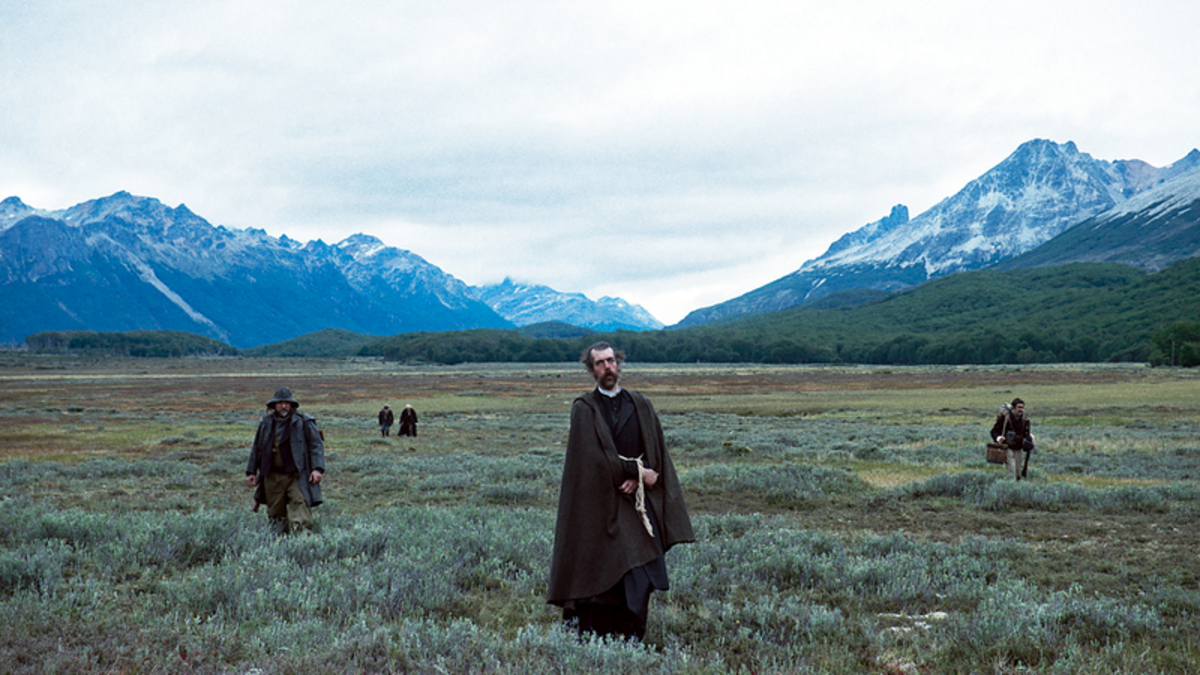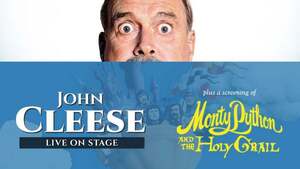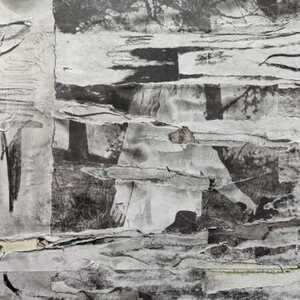
The Tale of King Crab
directed by Alessio Rigo de Righi and Matteo Zoppis
starring Gabriele Silli, Maria Alexandra Lungu, Ercole Colnago
For their first quasi-fictional feature, The Tale of King Crab (Re Granchio), directors Alessio Rigo de Righi and Matteo Zoppis effectively draw structure from their documentarian roots and fuse it with Italian folklore to develop a cinematic language that invigorates and redefines the fairy tale for this generation.
This seemingly effortless ability to draw from Italian history and world cinema while expanding and contextualizing such inspirations for this era without overburdening narratives with references to recognizable archetypes, legends, and myths has, in fact, become a kind of a hallmark for this new generation of Italian filmmakers such as Pietro Marcello, Alice Rohrwacher, and Jonas Carpignano. And, like Carpignano’s Calabrian-set A Chiara (reviewed earlier this year), A Tale of King Crab is the final film of a geographical triptych that began in 2013 with Rigo de Righi and Zoppis’ short documentary, Belva Nera (Black Beast), which was followed by their feature-length doc, Il Solengo. Their triptych, however, is centered in the town of Vejano in the Tuscia province, and all three of their films’ narratives emanate from a group of the town’s elderly huntsmen regaling each other with lore by the fire of their lodge.
Fittingly, The Tale of King Crab opens with a shot of a glistening and placid body of water that is soon disrupted by a shirtless bearded man standing in mid-stream who reaches down to retrieve a golden lavaliere of ancient design which he holds up to the sun. We are then instantly transported from summer to winter and many years in the future to visit the same lodge of Belva Nera and Il Solengo where the dining hunters sing the verse, “The doctor’s son is half crazy. With fire and fury he did justice!”
The doctor’s son is Luciano (Gabriele Silli), whom the hunters say lived in either the late 19th or early 20th century. As one of the hunters extolls, “Vejano was a town of poor people and princes,” but our protagonist Luciano was somewhere in between, as his father’s position allowed him to subsist as the town drunkard who could brazenly despise the prince for closing off the pathway around the castle where the town’s shepherds once walked their sheep. As the oral exposition continues, we learn that Luciano committed some felony at the Feast of St. Orsio, and the hunters state the town’s long-held assertions that Luciano was either crazy, an aristocrat, or a saint. Depending on the storyteller, Luciano may be a folk hero, a criminal, or an embarrassment in his chapter of the oral legends of the town, but the hunters are quite confident in one fact about the mythical Luciano—he most certainly loved the drink.
For the most part, Luciano, similar to Mario de Marcella in Il Solengo, is content with remaining on the fringes of Vejano, and like Mario, his downfall is ultimately tied to the feelings that he has for a young woman. Here, Luciano has his eyes on Emma (Maria Alexandra Lungu), the daughter of a fiercely overprotective sheep farmer (Severino Sperandio), but Luciano is reluctant to admit his true feelings to her directly. When Emma becomes angered at Luciano’s indifference towards her, he gives her his newly found pendant, and as they grow closer and share in their desire to leave the stale realities of their hometown, Emma’s father becomes more furious.
Concurrently, the prince begins to involve himself with Emma, going as far as to adorn her in the vestiges of the Virgin Mary during a religious festival. And this symbolic act provokes Luciano to express his hatred for the social, religious, and royal forces within Vejano that suppress people to remain in their expected places and roles with not only a sacrilege, but also the extreme act inherent in the title of the first part of The Tale of King Crab, “The Saint Orsio Misdeed.” Having finally gone too far, Luciano’s father must exile his son to Argentina, and with that banishment to a land far away from Vejano, our enclave of hunters, who return to the screen in a state of greater inebriation, must dig even deeper into their imaginations to determine a course for their village’s anti-hero.
The second half of the film places Luciano in a quasi-purgatorial state in Tierra del Fuego. Now sober, he is draped in clerical vestiges acquired from an arrow-punctured priest who, in exchange for a proper burial, offers Luciano a fortune in Incan gold. But to pinpoint the location of this cache, Luciano must turn to an unusual gold divining rod, the titular giant crab, a much less threatening beast than the panthers, jaguars, and vipers that occupied the minds of Vejano’s residents in Belva Nera and Il Solengo. With animals as allies in this distant and mysterious terrain, a group of gun-wielding pirates emerges as the key threat as they aim to plunder the very treasure that Luciano desperately hopes to discover for himself.
As the narrative of the second part of The Tale of King Crab develops, Luciano transcends his status as folk hero/anti-hero—the paradoxical embodiment of Vejano’s hopes and fears within the boundaries of the town—and becomes a legendary hero. Fortified by Rigo de Righi and Zoppis’ ability to draw from the films of Herzog and Nicolas Winding Refn that depict daring explorations into unknown lands, Luciano inhabits a world and a role grander than the ones from insular mythologies that have long been fabricated in Vejano, and he accomplishes feats of perseverance, ingenuity, courage, self-discovery, and redemption, foundational triumphs that make up heroic journeys across all time.
In the first chapter of The Tale of King Crab, we get to see the origins of Luciano as told through the hunters’ present iterations of his story with gaps and inconsistencies filled by Rigo de Righi and Zoppis’ understanding of the region, the lore, and Luciano’s fallibility as a human and as an outsider from the dominant classes of Vejano. But as the tale of Luciano moves away from the village, and the hunters’ accounts of his adventures become mere speculations at best, the directors create their own story of Luciano’s ascension into a saint, a figure who can inspire wonder, evoke catharsis, and elevate the hunters’ existence away from the provincial reality that they’ve always known. Together, these two parts of The Tale of King Crab present a unique kind of hybrid cinema that underscores the influence of reality on folklore while also embracing the imprecision and exaggerations of the human imagination and our time-tested fascination in characters who can transcend the challenges of their realities. This dual approach offers a distinctively fresh perspective on fairy tales, one in which Luciano is fundamentally human in his foibles and desires, but mythical in his ability to overcome his mistakes and shed away his fears and weaknesses. And thus, by the end of The Tale of King Crab, when Luciano does become a hero in a classical sense, he’s not too far out of reach from the hunters in Vejano, and he’s not out of reach from us, wherever we may be, as well.
The Tale of King Crab is being distributed in the US by Oscilloscope Laboratories and is currently available for streaming. Feature image courtesy of Oscilloscope Laboratories.












